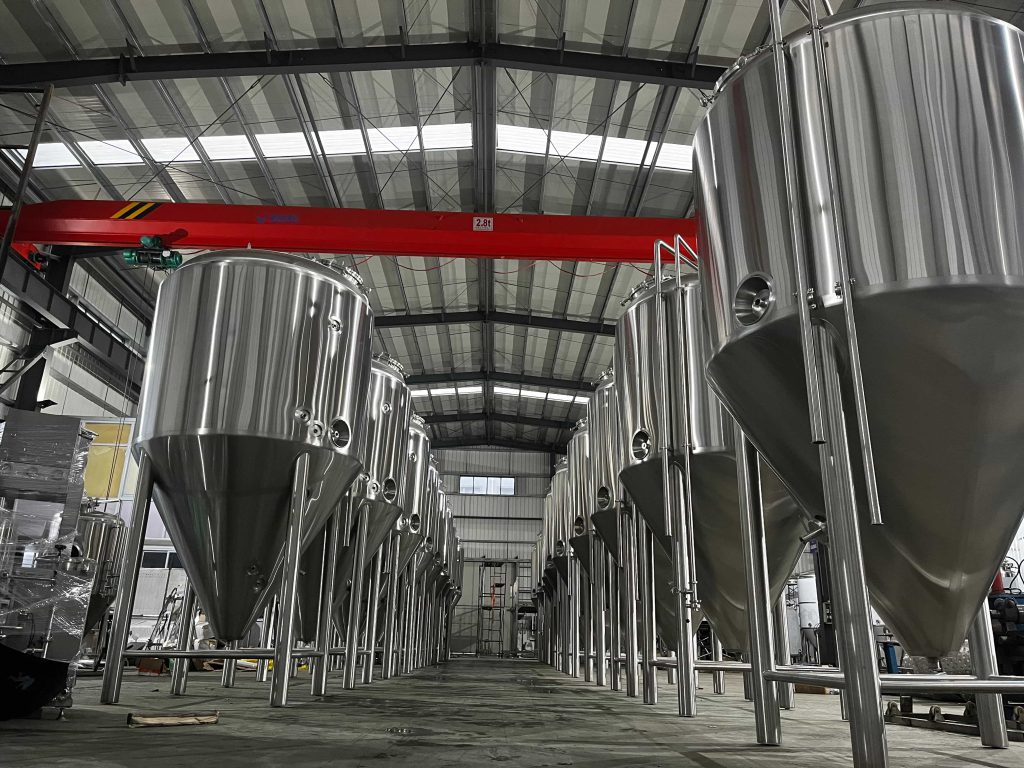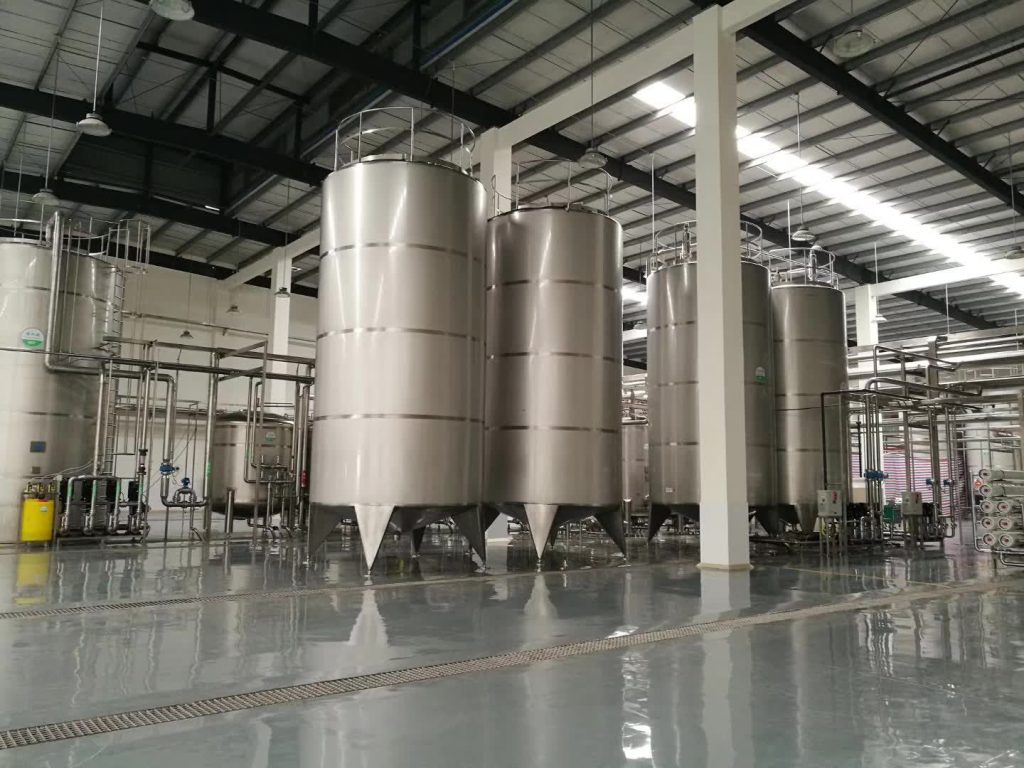China’s craft beer scene has experienced explosive growth over the past decade, transforming from a niche market to a vibrant industry full of innovation and enthusiasm. As we look ahead to 2024, certain breweries stand out for their unique approaches, commitment to quality, and potential for expansion. This blog explores these top China breweries that are shaping the future of craft beer in the region.
Introduction

In recent years, China has emerged as a major player in the global craft beer industry. The rise of China breweries reflects a growing trend of consumer interest in diverse and quality-driven beer options. This blog post delves into the breweries that are not only leading the market but are also setting trends for the future.
The Rise of Craft Beer in China
The ascent of craft beer in China is a relatively recent phenomenon that has taken root and flourished rapidly, defying the traditional beverage landscape dominated by major state-owned and international beer brands. This surge in craft brewing has not only reshaped consumer preferences but also reflects a broader shift towards artisanal and quality-focused products.
Historical Context and Market Evolution
Historically, the Chinese beer market was dominated by light lagers, with a few major brands controlling a significant share of the market. However, as the middle class expanded and international travel became more common, exposure to diverse beer styles grew. This exposure, coupled with the rise of social media and changing consumer lifestyles, fueled a growing appetite for craft beer.
In the early 2000s, the concept of craft brewing in China was virtually non-existent. The few existing “craft” options were limited to expat bars in major cities, offering imported beers at premium prices. The shift began as returning expats and adventurous locals started experimenting with brewing, driven by a desire to replicate the flavors they experienced abroad.
Government Regulations and Industry Challenges
Navigating government regulations initially posed significant challenges for these burgeoning breweries. The Chinese alcohol industry is heavily regulated, with stringent licensing, production, and distribution laws. Early craft brewers faced a labyrinth of bureaucratic hurdles, from obtaining brewing licenses to distributing their products.
However, in recent years, there has been a gradual relaxation of some regulations, spurred by the government’s recognition of the economic potential of the craft beer industry. This regulatory shift has encouraged more entrepreneurs to enter the market, further propelling the industry’s growth.
Consumer Trends and Market Dynamics
Today’s Chinese craft beer market is characterized by a diverse consumer base eager to explore new tastes and experiences. Millennials, in particular, are driving the craft beer trend, with a preference for premium, distinctive beverages that offer a story of local craftsmanship and authenticity.
The proliferation of craft beer festivals and microbrewery tours has also played a significant role in popularizing the craft beer scene. These events provide platforms for small breweries to showcase their creations and for enthusiasts to deepen their understanding of brewing artistry.
Looking Forward
The future of craft beer in China looks promising. Market analysts predict continued growth, driven by increasing consumer demand for high-quality and innovative beer products. Additionally, the trend of incorporating traditional Chinese ingredients—such as tea, fruits, and spices—into brewing processes is expected to keep evolving, potentially positioning Chinese craft beers as unique offerings in the global beer market.
Key Players in the 2024 Market
SKE : SKE (Ningbo ShihKuang Engineering Equipment Limited) was founded in 2000 and is one of the earliest companies in China to produce and manufacture craft beer equipment. After years of development with SKE’s team efforts, SKE is now becoming one of top leading manufacturers of high-end brewery & beverage equipment and turn-key project full services suppliers.
Jing-A Brewing Co.: Another Beijing heavyweight, Jing-A is a taproom favorite that has won several international awards for their innovative brews. Their Flying Fist IPA and Worker’s Pale Ale are particularly popular among locals and expatriates alike.
Boxing Cat Brewery: Based in Shanghai, Boxing Cat Brewery has been a significant part of the craft beer scene since 2008. They offer a wide range of American-style ales and have been instrumental in promoting craft beer culture in the south of China.
Panda Brew: Panda Brew stands out with its bold branding and wide array of styles. Based in Beijing, they are known for their experimentation and flair, appealing to a younger, hipper demographic.
Master Gao Brewing: One of the first microbreweries in Nanjing, Master Gao has gained a reputation for its Jasmine Tea Lager, a perfect blend of traditional Chinese ingredients and modern brewing techniques.
Analysis of Market Trends
The craft beer market in China is becoming increasingly competitive, with breweries striving to differentiate themselves through unique flavors, sophisticated branding, and immersive customer experiences. The following table provides a snapshot of the market trends and how these top breweries are positioning themselves within it.
Innovation and Sustainability: Future Directions

As the craft beer industry in China continues to mature, breweries are increasingly focusing on innovation and sustainability. These twin pillars are not only enhancing their operational efficiencies and product offerings but are also helping them to carve out a niche in a competitive market. Here’s a deeper look at how these elements are shaping the future of China breweries.
Embracing Technological Innovations
Innovation within the craft beer industry often revolves around improving product quality and brewing efficiency. Many Chinese breweries are adopting cutting-edge technologies to refine their brewing processes, extend shelf life, and maintain consistency in taste and quality. This includes the use of automation in brewing operations, which can help achieve precision in ingredient mixing and temperature control, ensuring every batch meets the desired specifications.
Moreover, technology is being harnessed to enhance the customer experience. For instance, interactive apps that allow consumers to track the brewing process of their favorite beer or participate in the creation of new flavors are becoming increasingly popular. Virtual reality tours of breweries and augmented reality beer labels that provide food pairing tips and brand stories are other innovative ways breweries are engaging with tech-savvy consumers.
Sustainability as a Core Principle
Sustainability is becoming a core principle for many craft breweries in China, driven by both consumer demand and the breweries’ commitment to environmental stewardship. Key areas of focus include reducing water usage, minimizing waste, and using sustainable materials for packaging. For example, some breweries are investing in water reclamation systems that purify and recycle water used in the brewing process, significantly reducing their ecological footprint.
Additionally, many are turning to local suppliers for raw materials, which not only supports local economies but also cuts down on carbon emissions associated with transportation. Ingredients like locally sourced hops, barley, and unique additions such as Chinese herbs and fruits are helping these breweries create a more sustainable supply chain.
Collaborative Efforts and Community Engagement
Forward-thinking China breweries are also looking to foster a sense of community and collaborative spirit as part of their sustainability efforts. Collaborations with other breweries and cross-industry partnerships are common, pooling resources and knowledge to innovate and tackle industry-wide challenges such as sustainable brewing practices and community engagement.
Community-driven initiatives, such as sponsoring local events or contributing to local conservation projects, are other ways breweries are building their brand while affirming their commitment to societal well-being. These efforts not only enhance their public image but also build strong, loyal customer bases.
Policy and Industry Support
The role of government policy and industry associations is crucial in supporting innovation and sustainability. Positive regulatory changes, such as incentives for using renewable energy sources and grants for sustainability projects, can make a significant difference in how breweries operate. Industry bodies can also play a pivotal role by setting sustainability standards and facilitating knowledge sharing among breweries.
The Road Ahead
Looking ahead to 2024 and beyond, the craft beer industry in China is set to continue its trajectory of innovative and sustainable growth. Breweries that embrace these principles are likely to lead the pack, offering not only high-quality, inventive brews but also contributing to a more sustainable and responsible craft beer culture. As these trends evolve, they promise to not only redefine the brewing landscape in China but also influence global standards within the craft beer industry.
Conclusion:China Breweries
The breweries highlighted in this blog represent just a snippet of the dynamic and evolving craft beer landscape in China. As 2024 approaches, these China breweries are not only poised to lead the market but also to redefine the parameters of craft beer on a global scale. With a focus on innovation, quality, and sustainability, the future of craft beer in China looks brighter than ever.
These are the China breweries to watch in 2024, as they continue to push the boundaries and introduce the world to the unique flavors of Chinese craft beer. Whether you are a seasoned beer aficionado or new to the scene, these breweries will provide a refreshing glimpse into the art of beer making.
FAQ
What is craft beer?
Craft beer refers to beer made in a traditional or non-mechanized way by a small brewery. It’s generally characterized by its emphasis on quality, flavor, and brewing technique.
How is Chinese craft beer different?
Chinese craft beer often incorporates local ingredients and traditional brewing methods, which can include unique additions like green tea, chrysanthemum, and even goji berries.
Where can I find craft beer in China?
Craft beer in China is most commonly found in urban areas, particularly in cities like Beijing, Shanghai, and Guangzhou. Many bars and restaurants now offer a range of local craft beers, and there are numerous craft beer festivals throughout the year.
Are these breweries export their products?
Some of the larger breweries, like Great Leap and SKE, have started exporting their beers to international markets in Asia and Europe. This trend is expected to increase as the reputation of Chinese craft beer grows.

